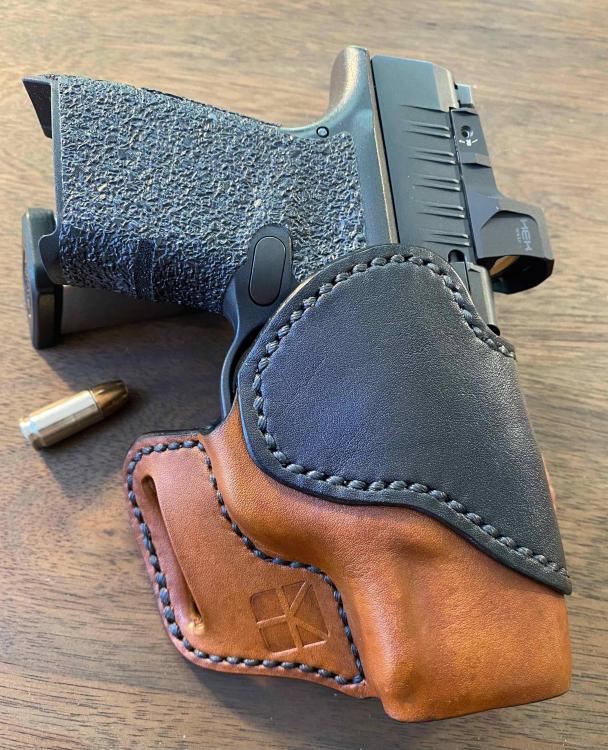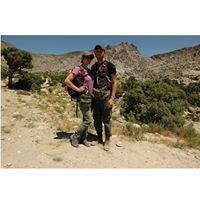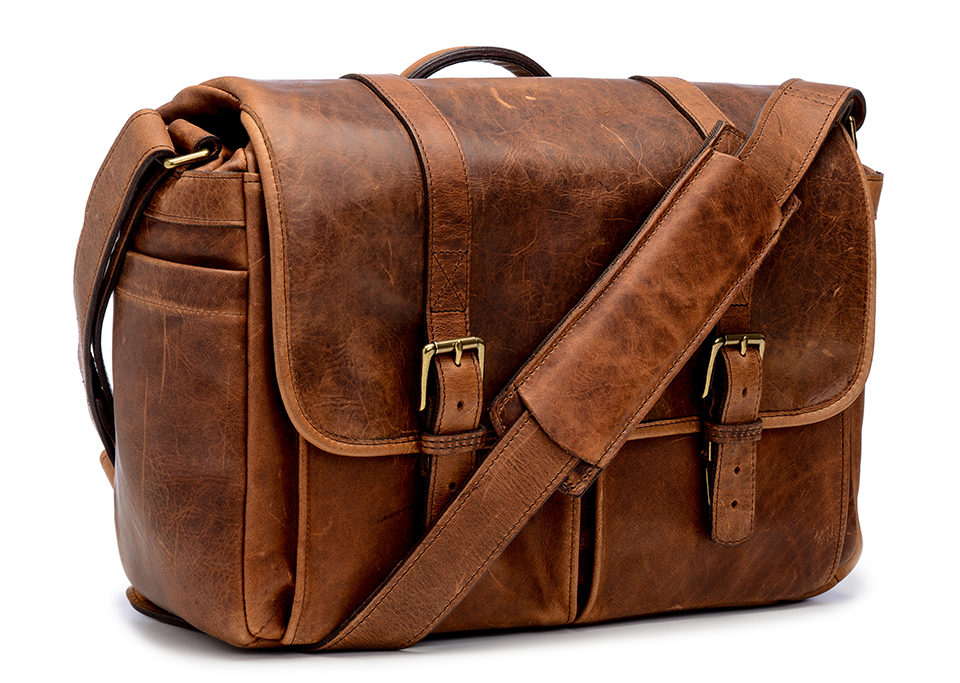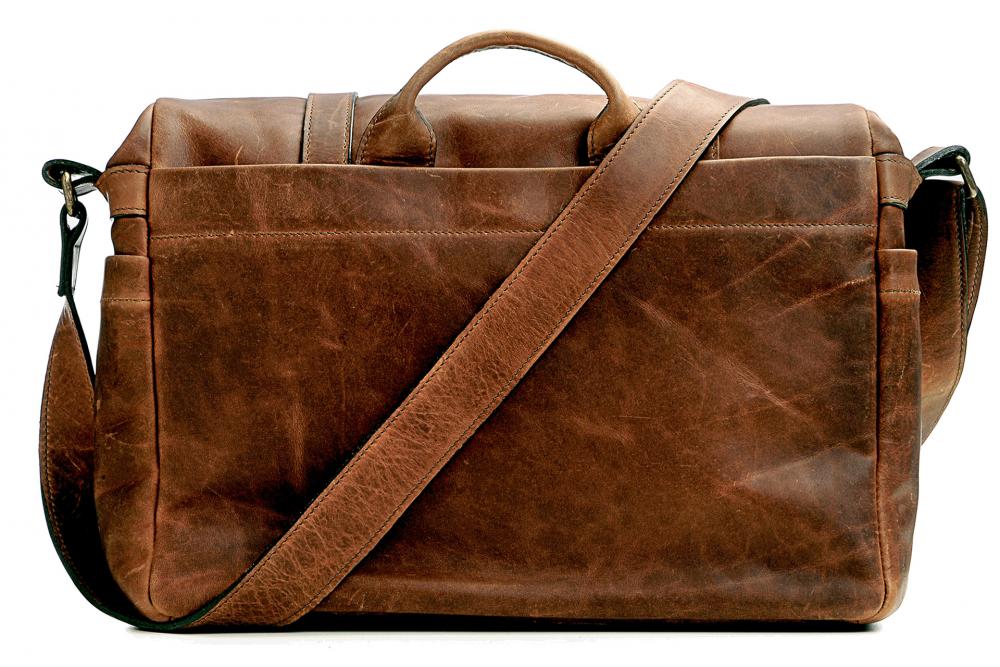Search the Community
Showing results for tags 'advice'.
-
I want to start a large project, I want to make a vest that emulates a biker vest but has my school logo on the back, I'm a teacher. I also want to have a number of smaller logos on the front of areas that I teach and clubs I am a part of for school. I have made material vests before so I am comfortable with making the pattern and think I can tackle a lot of the simple problems of sticthing etc, but its the actual tooling side I am getting a bit caught up on as I haven't done much of that and am uncertain how to approach it. My mind says to simply tool the back as one piece and do smaller things on the front but that, obviously, means I can't add to it later. I am worried that if I tool a patch and stitch it on, it will be too much weight. I plan on paiting the tooled areas but just want to get my head into how this will work. Anyone tried this sort of thing? Advice? I should add that I've gone full leather for the experience as I've got a heap of cheap stuff that's been sitting rolled up for too long
-
I started leatherwork originally to make harnesses. So I bought a whole side of leather I feel like maybe I am missing some steps. First I use my strap cutter to cut the leather. Then I use tokonole and a glass burnisher for the back side of the leather. So it's not all fuzzy. Once dry I bevel the edges. Then the lengthy process of burnishing the edges. And then I Punch out the holes for buttons or snaps or rivets. And this is where I begin to stress out because I don't understand the "finishing processes" the leather isn't tooled and I won't be antiquing. But I've seen so many things online that says to use a balsm or a bees wax/olive oil concoction. Or resolene or pro resist and so on.... Does anyone have any advice for me
-
I have been using a Durkopp Adler 165 for many years with only one occasional issue. At times I need to sew several layers, generally canvas, and or webbing. Often when I am at or near the foot height limit, or passing a seam with multiple layers, I skip stitches and struggle with the work.. Recently I agreed to help a retiree clean up and sell their Pfaff 545 H4 high lift machine. It uses a longer needle and definitely seems better. My thinking is that If I only want to keep one or the other. Is the Pfaff the obvious choice or is the Durkopp a far superior machine in other ways. thanks for any input Brad
-
Hi there! I'm new here. I ran into a deal for a few varieties of good quality leather I wanted to use for the bottom and sides of a game board and other projects - the hitch? I'm completely new to leatherwork & using leather. I need some help to do this project right. The side of the board isn't thicker than half an inch with rounded edges, so I was thinking glue could solely handle the job if I wrapped leather around the bottom and sides. I'd like to avoid nails / staples. What brand of glue do I use and how do I apply it (Further information below)? Any other advice is appreciated also! The board is: Solid walnut. Straight grain. The leather is: Mostly very flexible (Few exceptions). Top Grain (Some full grain mixed in) 0.8-1.2mm thick Treated on the front facing side (Not the flesh side.) The board will be manipulated by people's hands regularly, but never bent or flexed. so I'd like it to be durable but feel good as well. The sides will be visible, the bottom will be occasionally seen. The environment this board would be kept in is going to be very humid, hot, and only rarely cool. If you want more information on the leather.. I have a decent variety of types. Most are stain protected (Some more some less.). The finishes vary from simply hand finished, burnished & waxed / cracked, gentle and rough sanded, just waxed, and matte. Any and all help is appreciated. Thanks!
-
Hello, all. I believe this is my first post, although have observed for some time. I really appreciate all the wisdom shared through the forum. It's remarkable to find so many fantastic craftsmen who are also humble and encouraging to others who are working to hone their skills. I've made a few holsters over time. Have found that my different variations don't like sharp ejection ports. Especially noticeable on the recent project for a Springfield Hellcat (shown in attached pic). On this particular holster I find that almost any forward pressure on draw make the gun want to hang up as the forward edge of the ejection port digs into the leather, and especially the stitching. I did groove a stitching channel in hopes of mitigating, but this was not effective. In the past I have done holsters without a reinforcement panel, thus no stitching; this approach is an improvement, but still more scrape on draw that I like to see. On this latest project it is too severe to be acceptable, so I'm looking for methods to mitigate/eliminate the issue. What suggestions do you have? Am I missing something in my design or execution? Is this unavoidable with firearms with ejection ports with exterior edges that are not radiused? Thanks in advance for your wisdom.
-
Hi everyone! I think I may have worked myself into a corner and now I'm stuck in paralysis by analysis. I'm making a satchel from Hermann Oak 1881 and while the color and feel are beautiful, the leather behaves like a chrome tan in that it has a soft temper. So: being one who learns as they go, I decided to line it with more of the same leather. It wasn't looking like the bag would stand on its own, so I got some 1mm reinforcement from RM Leather Supply, laminated the front, back, and sides, but left the flap/cover unglued for now. Here's where I am stuck: do I commit and fully laminate the entire bag? Or save on materials and weight by only laminating the front, back, and sides? I currently have it cut to support full lamination, but I worry the bag will be too stiff in all the wrong places. However, if I cut out the bag reinforcement, then I can't go back. What would you recommend? The satchel is 16" x 10" x 5" (ish). Maybe a super soft/floppy lid is okay?? Thanks in advance!
- 2 replies
-
- advice
- reinforcement
-
(and 1 more)
Tagged with:
-
My Consew 206RB-5 has decided it doesn't want to turn on! I was working on the machine a few days ago and no problems. I checked the outlets and circuit breakers (all working), turned it on/off, let it rest for a bit and restarted the process. Nothing. There's no smell coming off the servo motor and the pedal depresses just fine. Any ideas??
- 5 replies
-
- consew 206rb
- machine fail
-
(and 1 more)
Tagged with:
-
Hi, I have a disability with my left hand. I have for the last 2 years or so tried to just keep working and hope that I would beat it. It has actually gotten worse and is now, trying to hold tools in that hand has just gotten to hard. I know that those things aren't being made anymore. I am putting some feelers out there to see if there are any used ones available. Thanks for the help. Randy
-
Has anyone used this clicker for bullhide? I plan to use it with dies that are about 8” x 8” Also wondering about cutting footbeds out of 9/10 oz veg tan Any advice? Recommendations?
-
Hello everyone, I know all the major brands of leather splitters but they are out of my money reach right now. I found a video on YouTube of a guy in Germany making his own splitter and it looks good. I even contacted him and the price is reasonable, about 200 EUR depending on the model. I am not advertising anything, just want to know if anyone knows this guy or has maybe purchased a splitter made by him. His YouTube channel is Alexander Majura.
-
Hi everyone, This is my first post here on the forum, so I apologize if I didn’t put this in the right place. Sorry for the length, I just want to give all the info I can to get the best advice. Thanks in advance for your time! I recently picked up a side of matte-ish black Horween Essex for a custom tote order. The tote was made and shipped and I started using the rest of the side for a crossbody bag with an alligator flap. I checked in yesterday with the tote customer to make sure she was happy and she said she was, but she’d noticed that the color was rubbing off on her white pants. She didn’t have this problem with her first tote from me last year and I’ve never had this problem in the 3 years I’ve been working with Essex so I was surprised. Out of curiosity, I went over to the alligator and Essex bag that I just finished up and rubbed it with a scrap of light colored T-shirt and sure enough quite a bit of color came off. Obviously, I’m concerned that not only does a customer have a tote that’s leaving color on her clothes, but in the meantime I have just finished an expensive, fairly time consuming hand-stitched bag (my first using alligator) that’ll be rubbing on someone’s shoulder and hip. I can’t have it leaving big black marks on someone’s clothes. I wouldn’t even try and sell it if I know that’s a possibility. Now that the bag is done, what can I do to try and seal it? The edges are all painted with Vernis edge paint so I’m nervous about getting any kind of solvent on them and having that turn into a big mess. I tried buffing the whole bag with a soft cloth to remove excess color, but the color transfer hasn’t stopped. I thought about using Resolene, but I’m concerned about (a) being able to apply it consistently and not having it gum up since it’s all finished and 3-D and not an easy flat surface and (b) won’t it make the matte black really look shiny and plastic-y? I liked the way it looked before with the soft finish. It made the gray alligator flap pop. Lastly, does it work well on leathers with soft-medium tempers. I’ve used it on heavy veg tan work but not this kind of thing. I can’t afford to experiment with stuff that “might” work, because if it works on a flat scrap and not on the finished 3-D bag, the whole thing’s wasted. Is there any way to salvage it? I loved the way it turned out and would really appreciate any advice. I’d also like to be able to help the tote customer so she’s not stuck with a bag that ruins her clothes. She’s in a different state, so if you have a product in mind that she could buy separately and apply as a non leather worker that’s even better. Thanks again! -Hannah
- 11 replies
-
- horween essex
- horween
- (and 9 more)
-
Hi y’all - I’ve been an off-and-on lurker on these forums for a while, & now I have a specific question! I’ve been working on coming up with & testing a solid dog collar design for my goofball German Shepherd. I keep having issues with my collars stretching. For the most recent one, I used a midweight veg tan leather with a softer leather backing, & it was better than previous designs, but still ended up stretching significantly. Should I go to a heavier weight veg? Try backing the veg with harness or latigo leather? Are there certain finishes or treatments that would help stiffen the leather & provide water protection? All ideas & experience appreciated! I want to come up with a design that can be tooled on the outside but still hold up to all the wear that a dog will put a collar through. Thanks! Kambra
-
I've decided to invest in a skiving machine. I'd love to know how to pick one, what features to look for, what makers are better in terms of durability and ease of maintenance, and finally where to buy one. I primarily work on handbags, wallets and smaller accessories, generally with soft and medium tempered leather usually up to 5-6oz (2-2.4mm). I want to use the skiver for both edges and splitting leather for lining. I understand that a band splitter would be better for actual splitting, but it seems skiving machine would be more flexible and financially more attainable. I'm in the states. My budget is around $1500-2500, though I'm somewhat flexible. I've done some research already, thanks to a lot of posts on this forum. So far it seems I should be looking at bottom feed machines where bell knife has a constant speed and presser foot controllers the feeder roller. And one that has vacuum suction. What other features would be useful for me? Which machines have these functions? I would appreciate any help in picking one. It's a fairly large investment for me and I want to do it right.
-
I am looking to buy my first leather sewing machine, I want to primarily make bags, and moccasin style shoes. 2 maybe 3 layers of 6-8 oz softer temper leather. I also like to stitch designs on to webbing belts (2 layers of seat belt webbing). The likelihood of me making a holster or sheath out of leather is slim to none. I might venture into leather belts. So here is where I am going to ask for help. What is the difference between roller feed , active roller feeds (techsew 830) and walking feet (techsew 860) for my applications I have only previously used a pfaff 545 & 1245 so I am familiar with how a walking foot operates, I am more curious what are the advantages and disadvantages of both. I will say I really like the idea of being able to see my needle as it plunges into the leather. I know my weaknesses are long straight lines and over or under running where I want to go because I am horrible at guessing where my needle/target is under the presser foot. I know that no one machine will do everything I want to do but I want a fairly versatile machine to start with and then pick up a 227R or similar cylinder arm medium duty machine that's capable of running 207 or better thread. I would like to get a machine in the next month so please help me understand what is going on, the pros and the cons. If you know of a good article, post or video link it or pm me. Thanks I need all the help I can get.
- 22 replies
-
Beginner looking for marketing advice.
Misterbeesleather posted a topic in Marketing and Advertising
I'm not so much a beginner in leatherwork itself. But i am a newb on selling handmade leather goods. I'm looking for advice as to how to start a buisness. I tried selling on etsy and it went ok but it wasn't really a buisness. Does anyone have any ideas on where i could start? There is this farmers market every saturday in my city and i was thinking I could try selling there. Im open to any ideas whether it be online or out in the real world. What worked for you? -
So I have used several kinds of thread snips( or what ever you want to call them) I have noticed that when cutting the heavier threads they get dull quick. I currently have some supper cheap stamped metal ones that are just mangling the thread instead of cutting them. Tried resharpening them but that hasnt been going well. My questions are: 1 What is the preferred name for this device. 2 Any recommendations on brands or styles to look at. 3 Advice on sharpening them. I need some wisdom about these tools and don't want to spend years of my own time to gain it so give me what you got in that department.
-
Hi folks I am in the uk. I am deliberating about buying a sewing machine, but I have very little idea of where to begin. I make tooled belts, sheaths, pouches, wallets and bags. I was looking at a flat bed walking foot machine (juki 1541) but someone advised me to go for a cylinder arm and build a flat bed to get maximum value. I don't have enough experience about threads or needles or machines and whilst I have watched a number of videos and read a whole load of posts I don't know what I need, or more I am getting very confused about what I need. Other than its got to be walking foot. I have a brother which I was duped into buying, as the seller said it could be used (converted) as a walking foot but it was cheap and I have used it on thin projects for a year of so but it is inconsistant and frustrating. I dont have the money to waste on another mistake. Please help if you can! Thanks Pip
-
Hello all, I am new here and have recently taken up the hobby of making and selling leather baby moccasins. I started out on an older Singer that belonged to my mother and about a month ago purchased a Singer 4452. Being new to this whole leather stuff, I figured, "it says it sews leather, AND everything else. I will try it." I do sew quite a bit of knit fabric, so the purchase seemed to be a good one for the time being and could hold me over on the leather moccasin making for awhile.I am obviously running into some convenience and mechanical issues with my Singer and wasting quite a bit of leather, so upgrading to the next step seems like the logical thing to do. From what I've gathered, a walking foot industrial sewing machine is what I should be using, and have done a fair amount of reading here and on other websites to try and gather as much info as possible to help me make a good choice in machine, although it's a bit overwhelming as I am still green and some of it is still over my head. So basically, I'm hoping someone can just tell me what machines they would think would be suitable for what I am doing. Here are some specifics: -I'm sewing deerskin at the moment, hopefully calfskin soon, no more than 2mm at the thickest. Not very stiff and exceptionally soft. (Again, I'm a newbie, I don't know the technical terms for leather. (: ) -I live in a very small studio, I do not have space for a table/huge set-up. -I have a limited budget, I can't justify spending $800+ when my profits are so small at the moment. I have been contemplating and researching the portable Consew CP 206R because it is portable and I can set it on my very small kitchen counter and it has the walking foot. I have also read a review of the Alphasew PW200, but haven't gone much further with researching that machine. Everything I have read about the Consew based on outfitting it with needles and thread has also been a bit confusing and overwhelming to me as well, all I know at this point is what I can pick up at my nearest Joann Fabrics. I really would like something that isn't going to be a struggle to find needles/thread for, I really enjoy the convenience of being able to run down the street and pick this stuff up, although I do realize that this might not be a reality anymore with a more specific machine. I really would like to find a machine that can get the job done, is affordable, and won't make me want to pull my hair out. Any advice and suggestions are appreciated! I have attached photos to give you all an idea of what I'm making and maybe that will help with explanations/advice etc.
- 4 replies
-
- leather sewing machine
- baby moccasins
-
(and 1 more)
Tagged with:
-
Hello all! I am here to ask for help narrowing down my choice of leather sewing machine. Please allow me to explain my needs, and also offer the disclaimer that I definitely don't know all of what I'm talking about. My first passion is music, which means I have a lot of time for my second passion, which is leather. I'll make anything anyone asks me to, as long as it is within my abilities. I want to be able to easily make all sorts of garments, everything from pants and shirts to full bodysuits. I already do a lot of saddle stitch for making pet supplies, straps for cameras, wallets, and anything like that. I've even had friends ask me to make leather intimate stuff like corsets and the only reason I said not right now is I don't have a machine for putting together bigger projects like that, and no way am I hand sewing large, complex patterns and designs. I know that a good leatherworker likely will have more than one machine. However, as this is going to be my first real machine, I feel like I should be getting the one that can do the most all around work. I've been researching, asking questions, contacting manufacturers for a long time and have finally narrowed it down to basically one or two models over a few different manufacturers. I also know that everyone might have a different opinion but that most of these machines are on the same level and can't really go wrong with most of them...but still, I like to see what others say. The main piece of advice I have gotten so far is a flatbed compound walking foot machine for light to medium weight material. I mainly use garment leathers and thickness isn't usually much more than a few layers of chap leather, but wouldn't mind being able to sew through thicker, sturdier leather as well. Maybe 2-2.5 oz at most? Here is what I am looking at so far (my price limit is ideally $1500, but I'm reasonably flexible)... Artisan 1797 AB LTHR Consew 206 RB-5 Techsew 1460 OR 1660 (Does anyone know if the 1660 Pro is worth the extra money?) I want to be able to do some things with shape at some point, but know I probably need a cylinder arm machine for that. I have looked at the Artisan 335 B for that option, and briefly spoke to Jerry at Artisan about that machine...would that be a viable option for that "first machine a leather worker should have" because it has the "flatbed worktable" option, which is just a smaller table that sits on the larger table? I already assume I am going to basically get a no on that question. I have been told numerous times to start with a flatbed compound etc.... If there are any other machines that I should be looking at based on what I listed above, I am more than open to suggestions. Also, feel free to ask any more questions that might help decide. Thank you everyone in advance. It kind of seems like all any of the machines I have on my final list are fine choices, but I'd like to hear other people's experiences with any of them. Thanks again! Aaron
- 9 replies
-
- industrial sewing machine
- leather wisdom
-
(and 1 more)
Tagged with:
-
Hey guys! Just thought this community would appreciate this. A short video giving some insight on the mindset of a super successful creator. (Film director and leather craftsman). Enjoy! You can check out more of Benito's work at @bennyboyindustries on instagram!
-
- leather craftsman
- vegetable tanned leather
- (and 4 more)
-
This beautiful Cowboy 227r just arrived last night from Neel's Saddlery. I assembled it all last night and from what I can tell it is ready to go, but I'm really nervous to do ANYTHING after I turn it on. I've never worked with this kind of machine and I'm afraid I might be missing something before I try it out. So I'm just looking for any experienced advice before I start. maybe it's just to tell me to stop being afraid and get on with it thanks in advance!!
-
Hey guys! So I'm begining to build a Star Wars costume, and I'm looking for a good pair of leather boots. I found these online and they are exactly what I'm looking for. However, I'm not happy with the fake leather, especially as the rest of the costume will incorperate real leather. I'm sure I could find a suitable pair of boots, but I've scoured the internet and can't find a pair of spats/half chaps that appeal to me. I'm not afriad of taking on a challange, much of the custom is going to be made from scratch, but the point is; would making the spats as seen here be a reasonable project for an inexperienced one such as me, or would it be best to find a local craftsman?
-
I have been having some trouble cutting round corners and circles out of leather. Right know I have a utility knife, which works good for cutting straight lines for the most part, and an x acto style knife, which I have been using for cutting corners. The x acto is too flimsy and tends to bend when I am cutting corners, making the cut at an angle, most of the time. I would like a knife that is that same style, but with a sturdier blade that wont bend. Anyone have any suggestions? I almost bought this knife, but decided I better ask for some advice before doing so: http://usaknifemaker.com/industrial-knife-set-especially-designed-for-leather.html#.U785SajPmO0 Thanks, Zayne
-
messenger bag Looking for advice for messenger bag project
EfrainBG posted a topic in How Do I Do That?
Hi, everybody! I'm about to embark in my second large project. I don't know whether that's the right term, but it's how I saw it referred to in a Youtube tutorial (by Leodis Leather). It basically refers to a bag with the stitches on the inside... saddle stitching, that is. I'm planning to make a bag somewhat similar to a Brixton by Ona Bags: esentially, a messenger bag with two pockets on the front side and one pocket on each side of the bag. Although I won't be selling this bag since it's for myself, I plan to make some modifications to the design as to keep it original, such as measures, form, handles, straps, thickness of leather to be used, no lining, fastening with double rings instead of buckles, burnished instead of folded over edges, attachment points in the corners to extra stuff (tripods, blankets, whatnot...), etc. In the end, it would be a bag of about 15"W x 12"H x 5-6"D As I said before, the bag won't be lined, since I intend to use a heavy full grain leather. In the range of heavy leathers, I currently have access only to a 8-10 oz that seems to be chrome tanned (when you cut it it has a white/blueish color in the middle) with some color applied to both sides of the leather. I know it's a thick leather for a bag and I have some questions about it. First of all, the leather used in Ona seems to be about 3-4 oz (only a guess from what I see in the photos and some basic scale math I've been doing). Actually, I intend to make my bag from a leather in the 5-6 oz range, either by searching for a different leather source or by thinning down on what I have at hand. and here is where my first question lies: how do I thin down from 8-10 to 5-6 oz without a splitter? I would need to thin down the entire piece of leather before cutting to achieve a uniform look and feel for the bag. I thought of using a circular sander on the suede-like side, but I've made some tests and it would be an obscene amount of work to do. On the other hand, I've noticed that sanding really ends up softenning the leather up really nice, no matter how thick it ends up being. My second question: If you look at the picture, you'll see that on the corners of the fron side of the bag, there would be as many as four layers of leather to be sewn together. If I manage to reduce the thickness of the leather to my target 5-6 oz, we're still talking of a seam that would around 8-10 mm thick... and that's only on a straight line. Wouldn't this put too much stress on the joints when I try to flip the bag inside out? how about the corners? By the way, I'm using (or planning to use) Tandy's Tejas poly waxed thread... it fades a bit with extensive use, but that's actually something I've come to like in my backpack and a couple wallets I've made so far. If the stress is too much on the joints, what are my choices? skive the places where the seams will be? or change the design altogether to an outside stitch one? One possibility I've been contemplating (although I would really like to make it this way) is to get rid of the side pockets and instead put some attachment straps to do some sort of modular system. This would add the benefit of loosing some wanted weight depending on the situation. I hope I made any sense and I'm really looking for your advice on this one. -
Hi all, I'm pretty new to tooling, and I notice that when the pros do their tooling they tend to work on big pieces of leather and they stay nice and flat while they're being tooled. I'm working on tiny things like fobs and patches, and about halfway through a project I find the leather curling up so bad it starts slapping the stone when I hit it anywhere but where I'm holding it down. I apologize if this is a well-answered problem--I've tried searching this forum but didn't find anything. Any advice or tips would be appreciated. Dave Example attached. 8oz leather, approx 2.5" x 5", halfway through tooling.












